Cancer Disparities and AON’s Response
Connecting with the Mission, Vision and Values
EMPLOYEE SPOTLIGHTS: Kevin Persad and Minty Mihdawi
The Skinny on Fad Diets
The Trailblazing Women Physicians of AON






Cancer Disparities and AON’s Response
Connecting with the Mission, Vision and Values
EMPLOYEE SPOTLIGHTS: Kevin Persad and Minty Mihdawi
The Skinny on Fad Diets






In 2022, we, as a network, served close to 125,000 patients and have been honored to care for 39,000 new patients. Our AON pharmacy team delivered 32,000 scripts and provided $47.56 million in patient financial assistance, and the AON lab team processed 1.25 million clinical lab tests. Since AON’s beginning, our patient reach has expanded to 368,000. These are astonishing metrics to learn about and share. It is a testament to the work, dedication and passion of the AON teams.
Embarking into 2023, our main goal continues forward — closing the cancer care gap to ensure affordable and accessible care is available to all patients. Our responsibility remains the same — being advocates for our patients to ensure they receive the best therapy for their cancer type including enrollment into the latest clinical trials.
Let’s recommit to driving excellent patient-centered care so that we may surpass our goals and create a greater impact in community oncology and in the lives of our patients who trust us every day. Our collective passion for serving others and improving cancer care is a force that brings about positive change. For example, our Diversity Committee, which is dedicated to addressing cancer disparities and led by Dr. Ruemu E. Birhiray, is already making great strides to identify disparities in practices and provide resources and tools to remove the barriers to care. I invite you to read this issue’s article on cancer disparities for more insights.
Thank you for your continued dedication to AON and our mission.
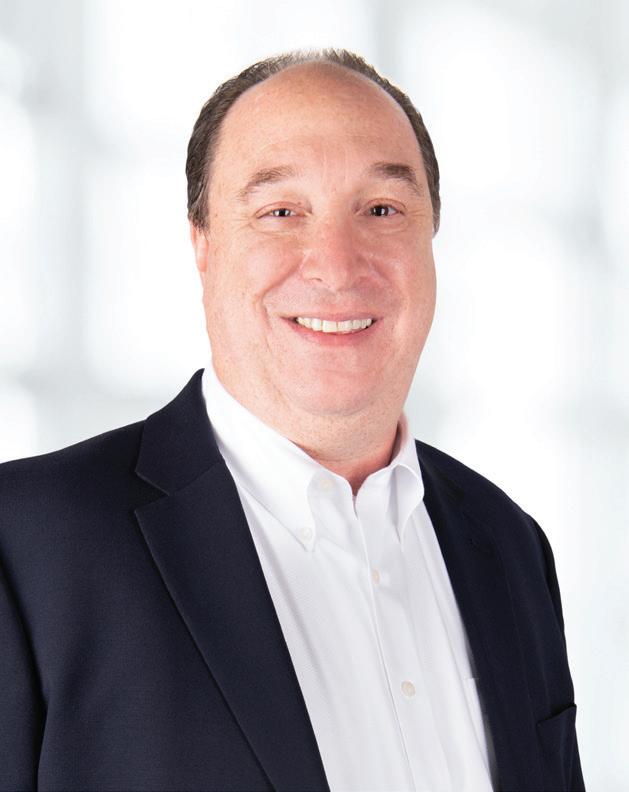
Todd Schonherz AON CEO
“Our responsibility remains the same — being advocates for our patients to ensure they receive the best therapy for their cancer type including enrollment into the latest clinical trials.”
Rose Gerber, MS, COA’s Director of Patient Advocacy and Education, and special guest Jennifer Lafferty, MS, RD, CSO, Clinical Oncology Nutritionist Supervisor, American Oncology Network (AON), discuss the importance of evidence-based nutrition recommendations for cancer patients and survivors at all stages of the cancer care continuum.
Learn more
For over 20 years, the CIO ORBIE Awards have recognized technology executives for leadership and excellence across the country. Mark Moch, AON's chief information officer, secures finalist position in the Corporate category.
Learn more
Two dozen of community oncology's most influential voices have joined forces with PatientPoint to innovate a next-generation patient engagement platform to help community oncology practices meet some of the biggest challenges facing their industry.
Learn more
Mark Moch AON's Chief Information Officer
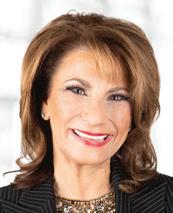
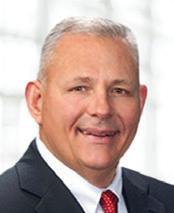


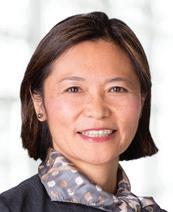

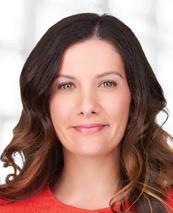


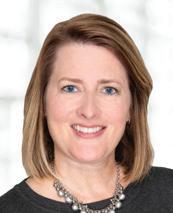
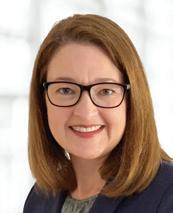
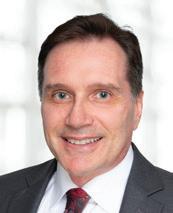
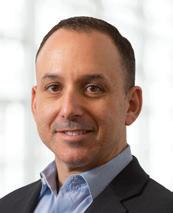


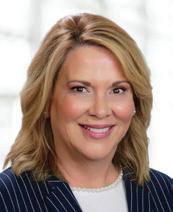

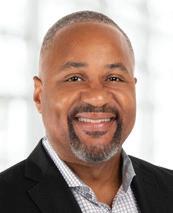
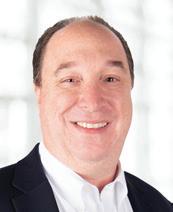
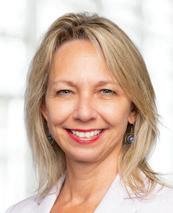
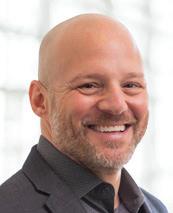

Female physicians have been a part of medicine since Ancient Greece with the physician Metrodora who is credited for writing the oldest medical book authored by a woman. Women have made great contributions to medicine including Florence Seibert who, as a biochemist, established the foundation for the first tuberculosis test; Virginia Apgar who created the Apgar score that analyzes a newborn’s health; and Florence Wald who is believed to be the founder of the hospice initiative in the United States. There has been stable growth in the number of women joining medicine as physicians. According to a report generated by The Association of American Medical Colleges, women represented 36.3% of the workforce in 2019, and the
rate of female physicians has increased year over year. Women also are more likely to specialize in pediatrics and obstetrics and gynecology. In oncology, women only account for 35.8% of the workforce, showing that while there has been growth in medicine and oncology, there is still room for diversified teams.
Women physicians are beneficial to medical teams as they are often reported to show increased empathy through listening and bring diverse and different perspectives. As of 2023, AON has 28 Board-certified female physicians on staff. Here is a spotlight on three AON women physicians.
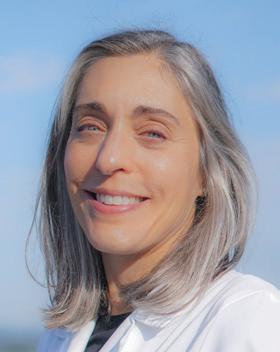
Dr. Knoble is Board-certified in internal medicine, hematology and oncology and has been a practicing physician at Zangmeister Cancer Center for over 10 years.
To learn more about Dr. Knoble, visit zangcenter.com
What inspired you to pursue a career in medicine and become an oncologist?
Dr. Knoble: I have always loved science but also interacting with people, so medicine was a natural combination of those two areas. Oncology, in my opinion, is the most elite level of that combination in medicine. The science behind cancer and the development of therapeutics in oncology is very complex and quickly evolving. At the same time, the intense, individualized and emotional conversations we have with patients as we guide them through the journey and challenges of a cancer diagnosis require a highly personalized level of communication and empathy.
Dr. Raab joined Messino Cancer Centers in 2015 and is a Board-certified oncologist who has been a practicing physician for almost 21 years.
To learn more about Dr. Raab, visit messinocancercenters.com
Dr. Raab: My parents, who were both medical oncologists, were my inspiration to become a physician and especially a medical oncologist. I learned from them what it meant to truly care for another, the meaning of sacrifice as well as compassion. I was interested in the biology of cancer from a relatively young age and desired to be in a dynamic field of medicine that challenged me daily. Oncology is ever-changing, and it has been fascinating to watch science evolve and new treatments emerge as a result of this.
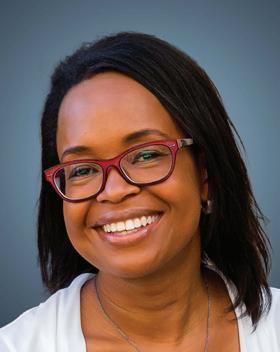
Dr. Wingo is a Board-certified gynecologic oncologist at Cancer & Blood Specialists of Arizona and has been a practicing physician since 2010.

To learn more about Dr. Wingo, visit cancerbloodspecialistsaz.com
Dr. Wingo: I initially thought I wanted to be a physical therapist. I volunteered at a rehabilitation hospital, and a physician took me under his wing. I then decided medicine would be the path for me. As I rotated through various specialties in medical school, I liked the diversity of OB/GYN. Once I began my residency, I was drawn to the oncology patients. These patients are often fighting through the toughest time in their lives, and their perspective and resilience are admirable. Gynecologic oncology is a very diverse specialty, which allows us to take care of the entire patient — diagnosis, surgery, chemotherapy and surveillance. The relationships I have developed over the years, and the way science has continued to advance, have kept me actively interested and engaged in the specialty.
"Every day I feel like I am surrounded by people who have an amazing perspective on life and who live to serve others. I learn so much from people every day."
"Being an oncologist offers a unique opportunity to form special bonds and relationships with patients. On a daily basis, there is the opportunity to provide hope, comfort and guidance during a very dark period of someone’s life."
What do you enjoy most about being a physician?
Dr. Knoble: I love the opportunity to continue to learn and evolve every day and the ability to apply my knowledge and experience directly to people’s lives, hopefully helping to improve each patient’s situation in some small way.

Dr. Raab: My favorite thing about being a physician is my relationship with my patients and their families. Being an oncologist offers a unique opportunity to form special bonds and relationships with patients. On a daily basis, there is the opportunity to provide hope, comfort and guidance during a very dark period of someone’s life.
Dr. Wingo: Hands down the relationships! I love the people I work with, and I love the patients. Every day I feel like I am surrounded by people who have an amazing perspective on life and who live to serve others. I learn so much from people every day.
What are your words of wisdom to young professionals considering a career in medicine and oncology?
Dr. Knoble: My advice to young physicians is to protect their autonomy and maintain control of their career destiny. After all the years of hard work, education and sacrifices made to earn a medical degree, it is important that we preserve the future of medicine. We need to be able to control the quality of the care we provide, our work-life balance and the extent of responsibility and liability we undertake in our careers.
Unfortunately, we don’t learn much at all about the business or laws impacting medicine in medical school. Just as in every other sector of society, profit margins and power are impacting our ability to practice quality medicine and threaten patient interests and outcomes. Learn the business of medicine and advocate for the right to practice high-quality care from day one.
Dr. Raab: Even with all the changes that have occurred and challenges that exist within the field of medicine, I still feel as if being a physician and caring for others is a tremendous honor and privilege. I recommend that young professionals considering a career in medicine take time to find their passion within the field, whether this is, for example, research, direct patient care, or teaching as all of these are valuable.
Dr. Wingo: Irrespective of what one chooses for a career, make sure you are passionate about what you are doing. Trust your instincts. Find a mentor. Continue to learn. Understand that you can learn from everyone around you.
“We want to deliver the best possible cancer care to each and every patient who walks through the doors of an AON practice,” said AON Chief Medical Officer Dr. Stephen “Fred” Divers. “We are working to close the cancer care gap, creating equitable access to the right care at the right time for our patients. To effectively deliver on this promise and initiative, it requires us to diversify our teams because we can reap the benefits of unique perspectives and talents that make us a stronger network for our patients.”
Dr. Stephen “Fred” Divers Chief Medical Officer2022 results are favorable with a 72% response rate, down 2% from 2021. We received 1,022 responses. (Employee only survey – all questions are optional and open ended.)
1,177 72 75
1,177 comments which will help us moving forward to create an action plan for improvement.
“The work I do at my company is meaningful to me.”
97% Agree or Strongly Agree.
“Teams at my company collaborate effectively to get things done.”
73% Agree or Strongly Agree.
Overall engagement score of 75 as compared to 73 in 2021 suggests we have an “Engaged Workforce.”
Engagement is 3 points above the healthcare benchmark of 72.
95%
“I know what is expected of me and what I need to do to be successful in my role.”
95% Agree or Strongly Agree. Up 2% from 2021.
89%
“I feel proud to work at my company.”
89% Agree or Strongly Agree.
“My direct manager is a good role model of the company’s CARE values.”
87% Agree or Strongly Agree.
“I have good opportunities to learn and grow at my company."
71% Agree or Strongly Agree.
“My company does a good job of communicating with team members and keeping us informed.”
64% Agree or Strongly Agree.
“I am satisfied with my company’s benefits.”
55% Agree or Strongly Agree.


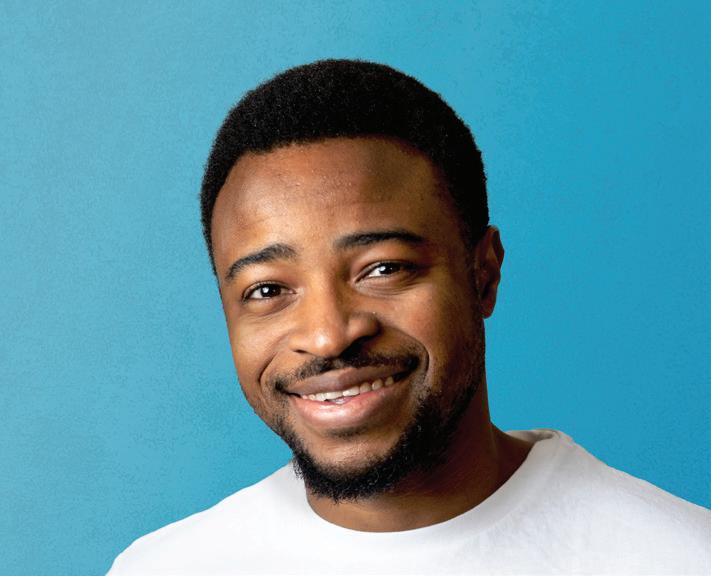


Disparities in cancer care still exist despite the many initiatives being implemented in healthcare and across the nation and the world. Barriers to quality care continue to be prevalent for many people who need these services. Preventive care, diagnostic testing, treatments and therapies have become inaccessible for various reasons that are within and outside of a person’s control. As a troubling result, people are more often diagnosed late, unable to receive any critical preventive care therapies, and may then have further difficulty receiving the treatments needed. This leads to higher cancer mortality rates among certain populations.
The correlation between health outcomes and socioeconomic factors (disparities) was first discovered in the 18th century in Italy with a study on the increased breast cancer numbers in Catholic nuns. This study progressed to identify similar correlations between British chimney sweeps and scrotal cancer numbers by Sir Percival Pott, a British surgeon, in 1775. These studies continued to educate on how and what socioeconomic factors have greater influences on cancer risks, including the identification that racial and ethnic minorities were at higher risks of certain cancers and death. As more information from studies has become readily available and sheds light on present disparities, healthcare leaders and systems can actively address the issues seen among their own patient population.
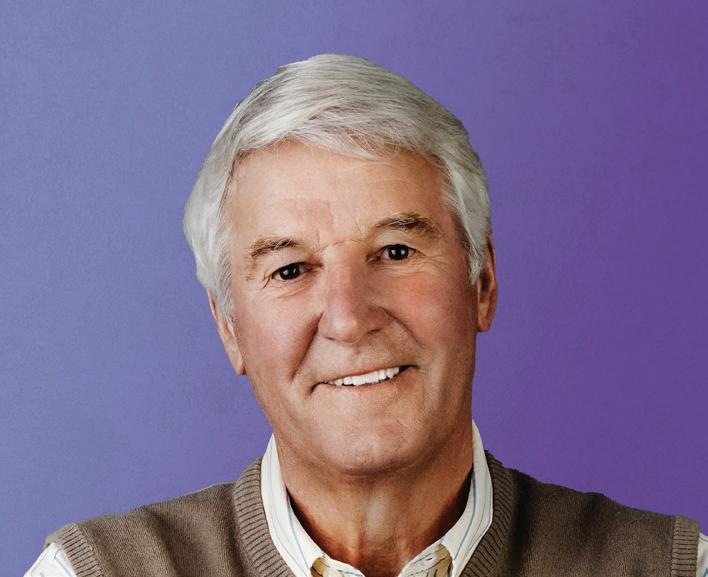
While there have been great strides in eliminating barriers to cancer care and working to ensure equitable access to care is available, there is still work to do across the healthcare (and oncology) space.
Disparities, by definition, is a “noticeable and usually significant difference or dissimilarity.” According to the National Cancer Institute, cancer disparities are differences in new and existing cases, deaths, morbidity, survival, survivorship, financial burdens, screening rates and diagnosis stages. Disparities are caused by a variety of factors including the social determinants of health: location where someone was born and lives; their age, genetics, race and sex; their income and education levels; and even if they are covered by health insurance. Determinants may also be perceived physician bias and healthcare distrust.
While there have been great strides in eliminating barriers to cancer care and working to ensure equitable access to care is available, there is still work to do across the healthcare (and oncology) space.
AON is constantly working to close the cancer care gap and make cancer care affordable and accessible at a local level, including advocating for more diverse clinical trials for patients of all backgrounds. Disparities are experienced at a personal level, which makes it challenging to eliminate them. One patient may have difficulty with transportation to and from the clinical site while another may struggle to afford the therapies recommended. Addressing the disparities on a personalized basis is a method of creating mass change across the network and healthcare landscape.
AON’s newly created committee, led by Dr. Ruemu
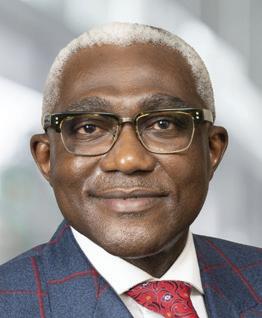
E. Birhiray from Hematology Oncology of Indiana , is dedicated to identifying and intervening when social determinants of health are recognized. Actionable plans are created on a regional and local level as the committee analyzes each practice site separately. The committee also uses Dr. Birhiray and his daughter’s, Maya Birhiray, five-step DRIVE strategy:
D: Diversity officer for clinical research studies.
R: Ranking for clinical studies.
I: Individual diversity, equity, inclusion and access plan.
Disparities can be both easy and difficult to identify; however, by learning more about the disparities that are more common in each geography and for the practice’s patient population provides groundwork for helping close the cancer care gap and delivering equitable care. Dr. Birhiray shared three steps practices can take to identify disparities and how to address them across various dimensions.
1. Collect data on the practice’s patients such as their social and economic situations. Consider the patients’ economic stability, ZIP code and physical environment, education level and language preference, food security, social and support systems, and access to care.
2. Identify patients who are more at risk. By talking to patients privately during appointments and through establishing trust, physicians can learn more about the struggles patients have when it comes to their healthcare journey.
3. Research and provide resources that are targeted to helping patients facing certain challenges. It may not be the practice itself that provides a given resource, but connecting patients with a local organization can improve their healthcare outcomes.
“The culture of care was designed to help people who have access to resources. Our role as physicians is to ensure everyone has a place at the table of healthcare,” said Birhiray.
V: Verification of study diversity.
E: Elevate and enhance training of minority investigators and research team members.
National Doctors’ Day rolls around yearly and is celebrated on March 30. Observance of this national recognition dates to 1933 after the wife of a Georgia physician thought of the idea. The first observance was held on the anniversary of the first administration of anesthesia in Jefferson, Georgia, in 1842. This day of recognition honors physicians across the healthcare field and expresses gratitude for their unwavering dedication to their patients and for advocating for their health and well-being. Physicians, especially oncologists, have chosen a difficult profession — one that draws on not only intellect and advanced knowledge but compassion, integrity and selflessness.
Oncology has come far since 1968. However, there are still disparities to overcome.
CARET-RIGHT Only 10.5% of oncologists work in a rural area despite the United States reporting 97% of the land as rural and close to 60 million people (19.3% of the population) residing in these areas. To ensure patient care is accessible, it is important that care and services are available at a local level. Community-based oncologists bring invaluable services to the community and as more people migrate to smaller communities, the need for local practices only increases.
CARET-RIGHT Male oncologists are more common than female oncologists (70% versus 30%). Despite advances, gender disparities persist in medicine.
CARET-RIGHT Likewise, diversity is still an issue as there are only 4.7% of oncologists who are Hispanic or Latino, 3% are Black or African American and 0.1% are American Indian or Alaska Native Underrepresentation of minority populations is still evident among physicians, and many companies are making the move to ensure staff accurately represent the communities they serve.

“Our physicians exemplify the best characteristics of exceptional caregivers, listening intently to their patients and embodying empathy and understanding.”
CARET-RIGHT AON has over 100 Board-certified oncologists practicing in 17 different states , and these numbers are growing quickly.
CARET-RIGHT In 2022, 125,000 patients were treated by AON physicians, and since AON’s inception, a total of 368,000 patients have been cared for by an AON physician.
Byrl James Kennedy, MD, is considered the father of oncology. He is an American physician who in 1968 worked toward creating a medical oncology specialty for systematic hormonal and cytotoxic chemotherapy.
CARET-RIGHT AON physicians saw 39,000 new patients just last year in 2022.
“Our physicians exemplify the best characteristics of exceptional caregivers, listening intently to their patients and embodying empathy and understanding,” said AON CEO Todd Schonherz . “While Doctors’ Day is only one day out of the year, we are continuously grateful for our physicians who have decided to join our network of community-based practices because together is the only way to drive positive change in the industry and to ensure equitable cancer care.”
Wherever the art of medicine is loved, there is also the love of humanity.” - Hippocrates
Thank you to AON’s dedicated, compassionate, skilled and expert oncologists. You exemplify what it means to care for the whole patient. You make a difference in the lives of your patients, their loved ones and your staff. As we fight together for those battling cancer in the communities we serve, we are better and inspired because of you.
#WeAreAON”
Shelly Glenn Chief Relationship & Growth Officer
The community oncology market will increase to $53.79 billion in 2023 with a compound annual growth rate of 12.2%
Cancer care costs per patient per month are about $12,000 in community oncology clinics whereas it is about $20,000 in hospitals, according to a report by the Community Oncology Alliance.
There is an estimated 13,704 oncologists actively practicing in the United States, and there is a 2.4% growth rate in employment projected.
There are 1,602 oncology practices across the nation, 950 of which are community-based clinics.
To celebrate Doctors’ Day, here are several interesting facts about oncologists and community oncology:
Celebrating AON Physicians, continued
On this Doctors’ Day, I want to recognize the special dedication of so many of our physicians who are committed to advancing cancer care through participation in clinical research. It is not an easy endeavor but incredibly important. THANK YOU!”
Katie Goodman Vice President Clinical ResearchOn behalf of myself, our teammates and the patients we all serve, I’d like to say thank you for ALL you do! Your thoughtful care, concern, diligence and attention to detail regarding the health of those who trust you to care for them doesn’t get the recognition it deserves. However, today we are grateful for the kindness, professionalism and overall love and compassion you demonstrate day in and day out without fear of contradiction. We greatly appreciate your service, and may you receive back 100-fold the kindness and care you have freely given.”
Curtiss McNair, Jr. Vice President Laboratory Services

A special thank you to our physicians who strive every day to share their clinical expertise and dedication to quality care. Their passion for growing the AON clinical trials portfolio and leading our P&T committee to ensure our treatment plans provide the most up-to-date care options for our patients is admirable. We have strong leaders in our communities. From bedside and lab pathology to research, our physicians strive for excellence in quality and costeffective care delivery. We look forward to our ongoing work together and supporting our great team of physicians as we partner to navigate AON to the next level of service in community oncology. Happy Doctors' Day!”
Tena Messer Regional Senior Vice President Operations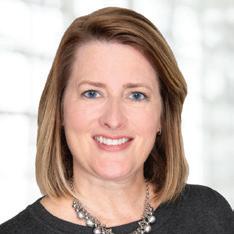
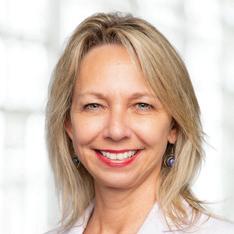
We are very grateful and honored to work with and provide support to all our physicians and healthcare professionals. Your true dedication, professionalism and never-ending compassion for patients cannot be understated. You are true heroes and knowing we, the IT Department, can contribute little things to help you along the way makes us very proud. Thank you for being who you are and doing what you do!”
Mark Moch Chief Information Officer
Each day I am amazed at the care and dedication that AON physicians serve their patients with. As a group, AON physicians care! They sincerely are concerned about their patients’ well-being and consistently go the extra mile in delivering patient care. AON physicians provide patient care with compassion! AON physicians understand patients’ situations and their diagnoses and compassionately serve them and their families. AON physicians are passionate about the care they provide! They continually invest in staying current on treatment options and new modalities to name a few. AON physicians strive to be excellent at what they do! It is an honor to work with the physicians of AON. They have one of the most difficult positions in medicine, and they do it well. “Thank You” for allowing me the opportunity to be a part of this very impressive team.”
Steve Swart Executive Vice President Practice OperationsCampaign for 2023: Closing the Cancer Care Gap

Driving healthcare equity through innovation. Closing the cancer care gap with transformational achievements. Learn more
Innovate AON is Live
Open to all AON employees. Submit your process improvement ideas by May 31.
Learn more
AON Announced New Chairman and Vice Chairman of the Board of Managers
Dr. Shalin Shah and Dr. Stephen “Fred” Divers have been appointed leaders of the Board.
Learn more
AON Pharmacy Receives Re-Accreditation
Congratulations to the AON Pharmacy team on securing re-accreditation status.
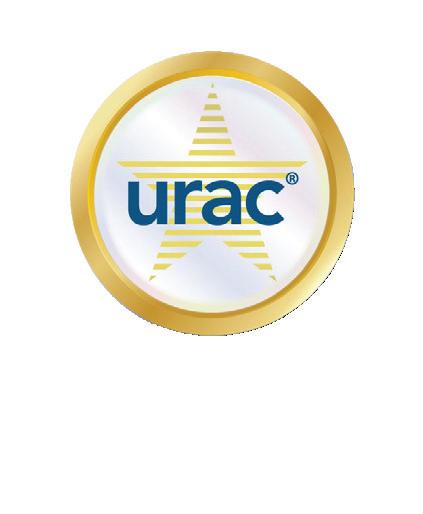
Learn more
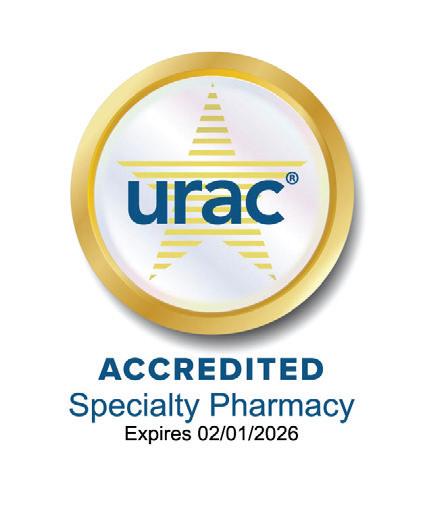
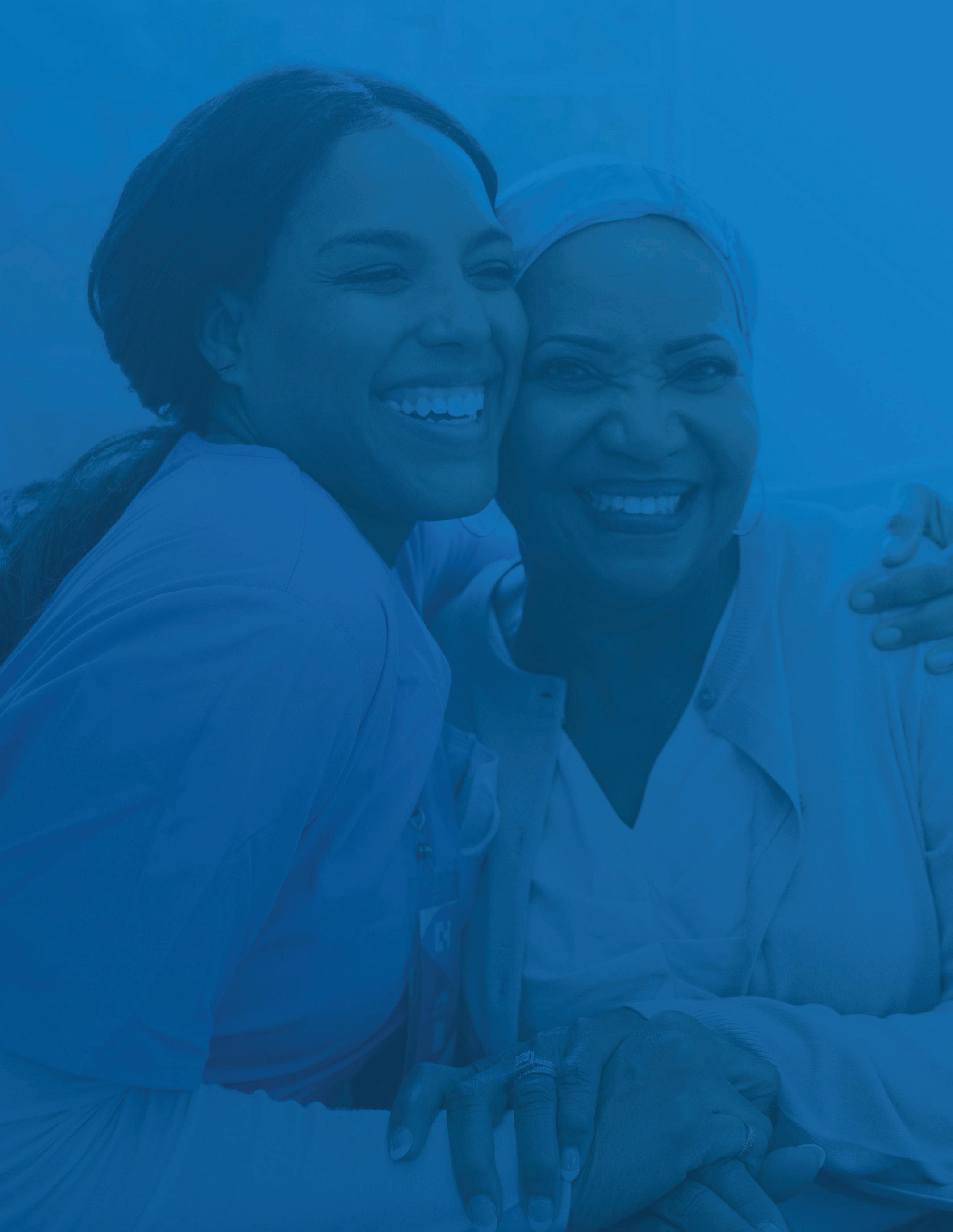 By: Beth Gann, Senior Regional Director of Operations
Beth Gann
By: Beth Gann, Senior Regional Director of Operations
Beth Gann

Walking beside a patient with a cancer diagnosis is a journey. Walking beside thousands of patients diagnosed with cancer is a mission. Each patient has a different healthcare journey, and we have the honor to be their guide and support during this critical time. Community oncology practices provide patients with personalized care at convenient locations. AON’s mission of protecting and sustaining community oncology allows us, as a network, to continue providing patients with these opportunities, focusing on holistic patient-centered care and cutting-edge treatment options, and driving affordable care for all — no matter the cancer diagnosis or therapy.
Patients diagnosed with cancer are an inspiration. Their strength and resilience to fight for survivorship push us to continue to be pioneers in and advocates of community oncology. Being a part of the network allows us, as care providers, to stay innovative. Protecting and sustaining community oncology comes from multiple channels. Changing treatment routes, new treatment
delivery options and community opportunities bring patient services closer to home and ensure that we balance all of that with a continued focus on reducing financial toxicity for the patient.
These patients and this mission inspire me as a leader to look at the opportunities that surround us and how we can turn our challenges into successes. Many who work with me always hear me say, “That is an area of opportunity.” Opportunities for us to make changes — big and small — are all around us. As innovators, we focus beyond the initial challenge in front of us and look at the bigger picture to determine how we can advance the care of patients at the clinic, community and network levels. Supporting community oncology pushes me to help team members reach their potential. There are always opportunities to learn from those around us. Just like we listen to our patients, we must listen to each other. Listening to my leaders, peers and team members inspires me to continue to grow and encourage others to do the same. AON is always looking
MISSION:
We preserve and protect the sustainability of community oncology for physicians and patients, so practices thrive.
VISION:
To ensure local access to exceptional care.
Continuously support the patient. Always do the right thing. Respectfully engage. Exceed expectations.
These patients and this mission inspire me as a leader to look at the opportunities that surround us and turn our challenges into successes.”
Connecting with the Mission, Vision and Values, continued

for ways to enhance patient care and that includes encouraging leaders across the network to further develop their own skills and knowledge and improve how they support the growth of their team members so that they too can reach beyond their potential. Working with oncology patients is not just a job but a passion. The values put forth by AON help us continue to light this passion and pass the
spark on to others. To continue to maintain my passion for what we do, I must find ways to make sure I am continuing to move beyond the daily challenges and focus on the future. How can I help advance oncology care, what difference can I make? It is not easy to answer those questions, but it is about finding the balance between drinking from a fire hose and barely being able to swallow and supporting a new initiative that
can change the outlook for patients, clinics and the network. Be open to opportunities.
AON provides the mission and the vision. It is up to us how we apply that to what we do every day. Is it through innovations, helping others reach their potential or being a better leader to drive change? What will you choose?

At AON, we’re making great strides toward closing the cancer care gap by ensuring every patient has access to the care needed to help fight their cancer. With an expanding network of close to 200 providers in over 75 clinics across 17 states , our practices are not only in big cities, they’re in rural areas where medical resources are scarce. We’re actively enrolling patients
2022 ACHIEVEMENTS

125,000
in over 150 clinical trials throughout the network, offering more community-based options so that patients don’t have to go far to get the latest treatment. And by responsibly controlling cancer costs and sourcing over $103 million in free medications and financial assistance for patients, we’re increasing access to care for hundreds of cancer patients.
39,000 new patients welcomed
1.25 million clinical lab tests processed
• 1,600 bone marrows
• 1,100 molecular tests
• 1,600 FISH specimens
$52.8 million in co-pay assistance and $3.5 million in drug replacement for over 4,700 patients
263 patients enrolled in 150 clinical trials
$56.21 million in healthcare cost reductions resulting from adopting 17 biosimlars
16,000 PET/CT scans performed
$47.5 million in medication assistance for over 3,878 patients and 32,000 prescriptions filled
OCM quality scores exceeding 90% and 6.1% decrease in the costs of total care
Dr. Divers is a Board-certified medical oncologist at Genesis Cancer and Blood Institute in Hot Springs, Arkansas. He serves as AON’s chief medical officer, is chairman of AON’s advisory board and vice chairman of AON’s Board of Managers.
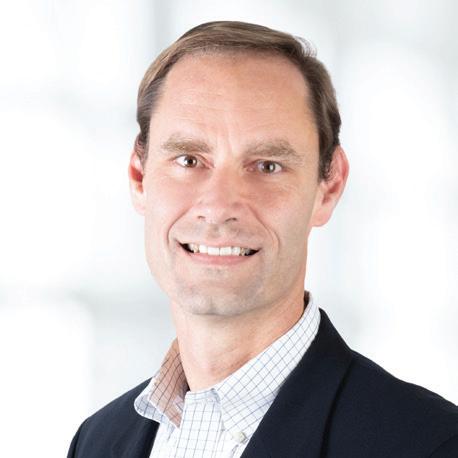
As a leader of AON, what are your top priorities and long-term goals for the organization?
AON is a service organization, physicianled, and patient-centric, with the mission of delivering the highest quality, cost-effective care for patients in a compassionate setting in their own communities. Our platform of services ensures that our providers have the tools necessary to work at an elite level, utilizing the most current data, diagnostic technology, and therapeutic agents. At AON, we are committed to the value proposition that is community oncology, with a goal of continuous improvement and sustainability of the model.
What do you believe are the biggest challenges facing AON and community oncology? What are the strategies for tackling these challenges?
The rapid expansion of data and complexity of data poses a significant challenge for the community oncologist. Remaining current on the latest biomarkers, trial results, and novel therapeutics is now a daunting task. We are addressing this by incorporating actionable biomarker data within the EHR and utilizing decision support tools and AI technologies
embedded within the EHR to ensure we are matching the right therapy with the right patient. A second major challenge facing community oncology is the incorporation of cell-based therapies such as CAR-T and bi-specific antibodies for our patients. This will require SOPs and specialized training for our providers. Thirdly, the cost of healthcare remains a concern for patients and payers alike. Our team of value-based experts is striving continuously to identify opportunities to preserve quality care at a lower cost.
How is AON addressing the disparities in cancer care?
Healthcare equity is an ongoing focus for AON. We have an advisory committee focusing on identifying social determinants of health at our practice sites. We determine actionable metrics that we hope will create meaningful change and take steps to implement projects that will remove these barriers to care.
What do you see are the strengths of a national organization such as AON?
AON provides the tools and resources to partnering physicians that enable them to function from a clinical and business perspective at the highest levels within their community. Our physician-led, patient-centric platform at AON empowers our network of providers to become leaders in their field, shaping the future of oncology care as well as ensuring its sustainability.
Kevin joined AON in March 2019 after being inspired by the company’s growth trajectory and dedicated focus on providing exceptional patient care. In his words, “I wanted to be part of something special, which is AON.” His role is anything but routine because working in data analytics brings unique challenges each and every day. He finds joy in helping those around him, whether it be in generating a report or building a Power BI Dashboard for analysis and learning, and says he has “never felt more welcomed
and part of a family as [he] does with AON IT.” Since joining AON, Kevin has served as a business intelligence analyst, business intelligence supervisor and business intelligence reporting manager before securing his current position.

Kevin is a self-taught mechanic and enjoys working on cars, fishing, golfing, doing yard work and watching sports. He spends his time outside of work with his wife and two daughters watching movies and doing outdoor activities.
Minty has been a nurse for 22 years and currently works as the clinical nurse manager in Johns Creek, Georgia, at Cancer and Blood Specialists of Georgia, which opened in September 2022. “I love working with oncology patients,” she shared. “They are by far the best patients to care for and have such an amazing attitude. They inspire me to live my life to the fullest and not take anything for granted.” In her role, she works alongside her fellow nurse in the infusion area at the clinic. Despite finding her passion for oncology, Minty did not start her nursing journey thinking she would work in the oncology field. She has worked
in both in-patient and out-patient settings, but when she was given the opportunity to work with cancer patients, she agreed and has not looked back. She has also enjoyed working with her colleagues who she says are “very special” and “have a heart of gold and go above and beyond any other specialty [she has] encountered.”
Minty has been married for 21 years and has a 16-year-old son. She is also a dog mom to a poodle mix named Rigby. When she is not working, she likes to read, watch documentaries and travel.
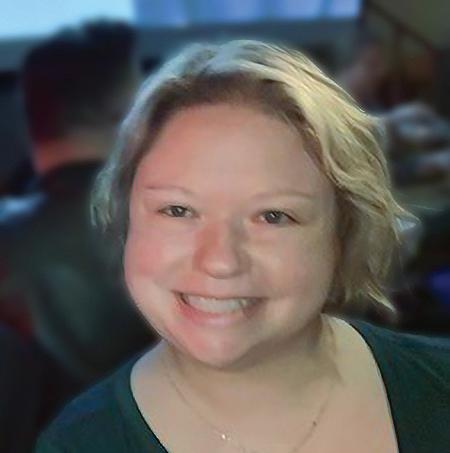
 Hillary Buch, MS, RD, CSO, LD Oncology Dietitian AON Care Management
Hillary Buch, MS, RD, CSO, LD Oncology Dietitian AON Care Management
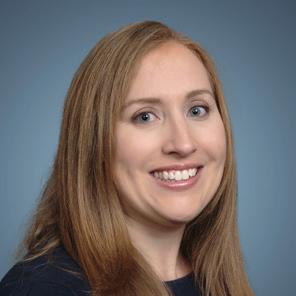
What is a fad diet? It is a diet that receives a lot of enthusiasm as well as one that quickly comes and goes with something new to replace it.
Fad diets are not a new phenomenon with the first one believed to be in a booklet by William Banting in 1863. Fad diets can also be recycled, reappearing years later and being touted as the newest and greatest thing. For example, the Master Cleanse first appeared in 1941 and encouraged people to drink a mixture of lemon or lime juice, maple syrup, water and cayenne pepper six times per day for at least 10 days as an aid for weight loss.
This fad diet resurfaced in 2006 when Beyoncé claimed it was the secret to her recent weight loss.
We are constantly bombarded with messages promoting this type of diet. For example, waiting in line at the store and you will see an array of magazines touting the latest and greatest in nutrition. As you watch TV, you will be exposed to commercials for everything from meal plans and dietary supplements with claims of weight loss and better health. It can be easy to become caught up in the advertised claims. But are fad diets actually beneficial and healthy to follow?
At the beginning of the year, you tend to encounter more fad diets than before that advertise weight loss, changing eating habits and other healthrelated goals. Here are nine telltale signs to help you spot a fad diet:
CARET-RIGHT Endorses a short-term quick fix.
CARET-RIGHT Promises rapid weight loss.
CARET-RIGHT Promotes a certain food or type of food as being a miracle food.
CARET-RIGHT Villainizes certain foods or food groups.
CARET-RIGHT Eliminates foods or food groups from your diet.
CARET-RIGHT Has strict rules that must be followed.
CARET-RIGHT Requires you to buy products like meal replacement shakes or bars or dietary supplements.
CARET-RIGHT Includes a list of “testimonials.”
CARET-RIGHT Lacks scientific evidence to support the diet or is disproved by reputable scientific organizations.
Do not fall for fad diets because they promote what is often difficult to maintain for the long run. If you are looking to change your eating habits, here is a simple three-step plan to help you take control of your health goals this year:
1. Change how you refer to the word “diet.” This word gives the connotation that there is a starting and stopping point, which is the case with many fad diets because they can be too difficult or unrealistic to follow. Instead, think of a diet as a lifestyle change that encourages healthy habits that can be maintained over time.
2. Understand what is healthy and nutritious. For example, it is unrealistic to avoid all carbohydrates. Carbs provide a good source of energy for the body as well as vitamins, minerals and fiber. Instead, focus on choosing whole-grain versions of carbohydrates packed with fiber, like whole wheat bread, and reducing processed carbs like potato chips and cookies from your diet.
3. Focus on a balanced diet that promotes overall good health. Including plenty of fruits, vegetables, whole grains, beans, nuts and seeds is ideal. Choose lean protein and low-fat dairy, and avoid excessive added sugar. Creating a healthy diet will help you achieve your long-term health goals, whether that is having more energy or losing weight.

Keep in mind, however, that if weight loss is the goal, it should be slow and controlled. Losing one to two pounds a week is typically recommended because this rate of weight loss is easier to achieve and maintain. This can be done with changes in eating habits and physical activity. Diets that promote losing large amounts of weight in a short amount of
time, such as fad diets, are hard to maintain, usually resulting in regaining the weight once the diet is no longer followed. Remember, fad diets do not focus on lifestyle modifications, which are needed to keep the weight off, and are not sustainable throughout life. Focus on establishing a healthy diet that fits you and your goals.
2 tbsp extra-virgin olive oil
1 large yellow onion, chopped
1 medium bell pepper, chopped
6 cloves garlic, minced
1 pound ground chicken
2 tbsp tomato paste
1 tbsp chili powder
2 tsp dried oregano
1 tsp ground coriander
½ tsp salt
½ tsp ground pepper
2 (15 oz) cans of no-salt-added
cannellini beans, rinsed
1 (28 oz) can of no-salt-added crushed tomatoes
2 cups reduced-sodium chicken broth
¾ cup shredded Cheddar cheese
¾ cup plain whole-milk strained yogurt (like Greek yogurt)
¾ cup thinly sliced scallions
1. Heat oil in a large pot on medium-high heat.
2. Add onion, bell pepper and garlic. Cook, stirring often, until tender (about five minutes).
3. Add ground chicken and cook, stirring occasionally, until the chicken crumbles and is no longer pink (about eight minutes).
4. Stir in tomato paste, chili powder, oregano, coriander, salt and pepper. Cook and stir frequently until tomato paste caramelizes and spices are fragrant (about 1 minute).
5. Add beans, tomatoes and broth. Bring to a boil over medium-high heat and then reduce heat to medium-low and simmer, stirring occasionally, until vegetables are softened (about 20 minutes).
6. Serve chili topped with Cheddar cheese, plain Greek yogurt and scallions, if desired.
NUTRITIONAL INFORMATION:
Serving Size: 1/4 cup
Calories: 206
Protein: 7g
Carbohydrates: 13g
Sugars: 4g
Fat: 16g
Saturated Fat: 3g
Sodium: 72mg
For complete recipe and nutrition facts: Eating Well

At 67 years old there is no stopping Ms. Georgia. Born and raised in Baton Rouge, Louisiana, she is well known in her hometown. After graduating from Louisiana State University (LSU), she started teaching immediately after college. In fact, she taught many of the physician’s children whom she would later depend on for her cancer care and treatment.
Georgia predominately taught sixth grade English Literature for 24 years in private school before pivoting her career into the development side. At the same institution, she became the
alumni director and played a large role in the fundraising campaign to raise $8 million for a theatre and pavilion.
Then, in 2003, the LSU Foundation offered her a fundraising position. Excited to see things come full circle, she was happy to return to her alma mater. It was in late 2006 as she was busy traveling to kick off another capital campaign when leg pain changed everything.
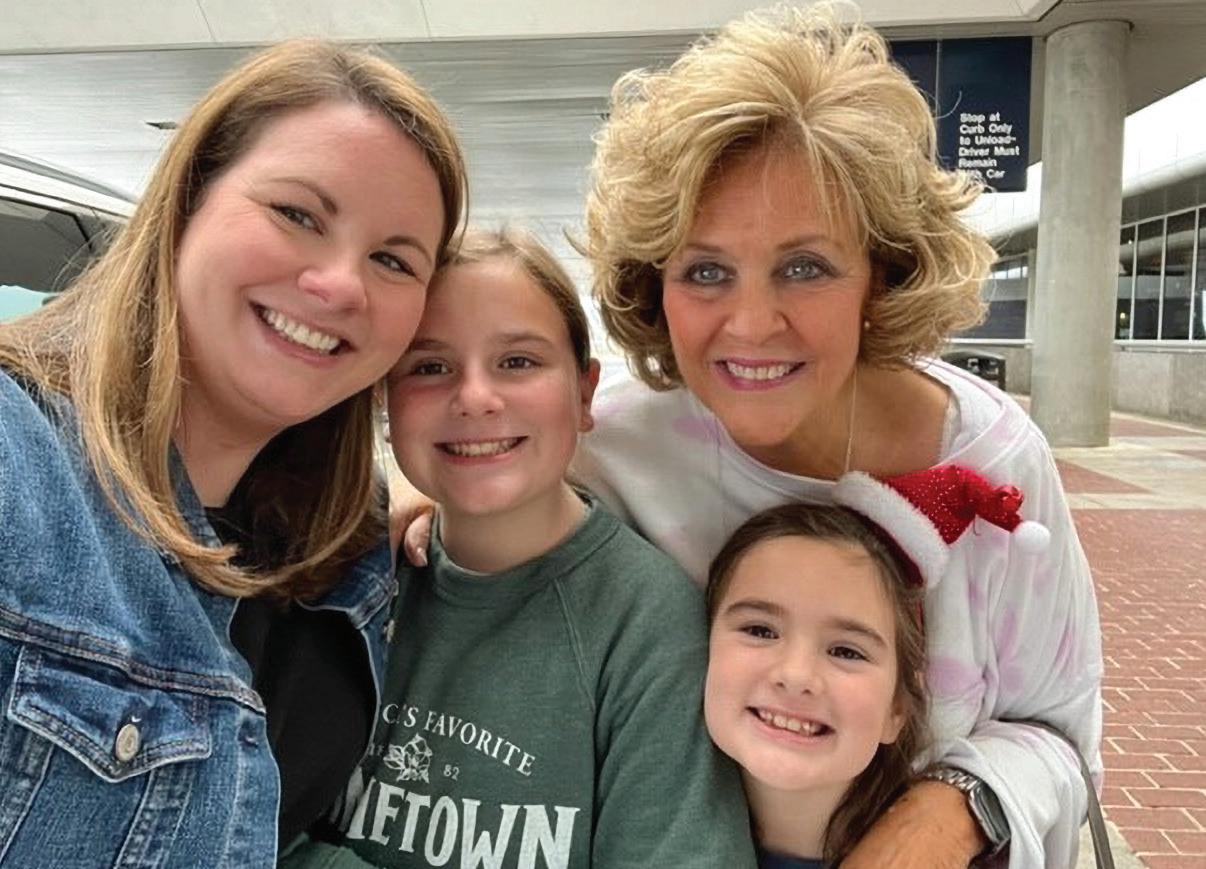
Georgia explained, “I felt a deep pain in the top of my leg, almost like in my bone, and I knew something was very wrong.”
She underwent numerous X-rays and weeks of physical therapy with no respite from the leg pain, but no one could figure out the cause. She went to an orthopedic physician and got an MRI. In a serious tone the doctor said, “Please just stay here for a minute.”
At this point Georgia felt the news was not going to be good. “I was absolutely shell shocked when they told me I had a tumor in my leg.” After seeing a local oncologist he recommended that her next step should be to seek treatment at a large cancer institution in Texas. It was there, in 2007, that she received her diagnosis of plasmacytoma.
After receiving radiation and then enduring surgery, a rod was inserted into her femur to keep her leg from breaking. Georgia continued to make trips to Texas for her cancer care treatments. “This became really difficult on me, all the traveling to another state for treatment while I was still working full time. The cancer center required that I go once a month and spend five days there for testing and blood work, and the travel was taking a toll on me and my job which I needed to keep.”
Georgia told her endocrinologist about the trouble she was having trying to manage traveling for her care, and he offered to mail her blood work to the institution so that she wouldn’t have to travel. She then started thinking about finding a local oncologist in Baton Rouge. She knew a local oncologist for many years from teaching his children. She called his office and said, “Please tell Dr. Miletello that this is Georgia Scobee, I taught his daughters and I would like to be one of his patients.”
Medical oncologist Dr. Gerald


Miletello with Hematology Oncology Clinic said, “Patients are in shock and devastated at first when they hear they have cancer, but once it sinks in patients typically change in the way they look at life. They realize what is important in their lives and tend to not hold onto the petty things they used to worry about.”
It was after a check-up with her orthopedic doctor that two new spots were discovered, one under the right breast and one in the left groin area, so he followed up with Dr. Miletello. At this point Georgia was diagnosed with multiple myeloma, and Dr. Miletello decided radiation and additional treatment were needed.
Dr. Miletello continued, “Georgia is intelligent and well respected in our community. After being treated with surgery, radiation and Zometa®, she is doing really well and has been off treatment for seven years.”
After being treated at a large cancer institution, it was such a positive experience for Georgia once she became a patient at Hematology Oncology Clinic. The traveling back

“It’s so nice to be able to get my treatment and care here locally in Baton Rouge. When I think about the experiences I’ve had, it tears me up sometimes. The most important thing has been the incredible support and care from Dr. Miletello and his amazing staff.”
Patient Story: Georgia Scobee, continued
and forth to Houston while trying to work a full time job was just too stressful for her.
“It’s so nice to be able to get my treatment and care here locally in Baton Rouge. When I think about the experiences I’ve had, it tears me up sometimes. The most important thing has been the incredible support and care from Dr. Miletello and his amazing staff.”
“Everyone at Hematology Oncology Clinic is so friendly, and they call you by your name know who you are and that is such a warm feeling that you don’t experience at other cancer centers.”

Georgia stated, “Dr. Miletello is an amazing and talented oncologist. He has an exceptional bedside manner and personality, and he cares about his patients. I believe the care you
receive as a patient makes a huge difference in your attitude to get well and stay positive.”
After a total hip replacement in 2014, complications occurred due to radiation received in the past. Numerous surgeries occurred and after months of treatments and having to wear a wound vacuum for several months, Georgia said, “I am so happy to be alive because at one point, I really didn’t think I was going to make it.” It was a scary time, but faith, prayers and excellent medical care allowed her to heal.
Continuing, “I am so lucky to have the support of my daughter, her husband Ryan and my friends. Here is the thing about cancer, you can’t stop living and you can’t let those around you stop living their life either.”
Georgia is very proud of her daughter, Meghan. She earned an undergraduate degree from Wellesley College then went to graduate school in Philadelphia followed by a PhD in chemistry from Duke University. “So when I was diagnosed and Meghan wanted to drop out of school to help me, I said no ma’am! None of us know what God’s plan is for us and you can’t stop your life because of cancer.”
Georgia is still going strong, working full time and in her free time hanging out with her girlfriends, “I hope to make it to 80 so that I can see my oldest granddaughter, Anne, through college, and I would love to see my youngest granddaughter, Aimee, make it through high school.”
PATIENT TREATED AT:
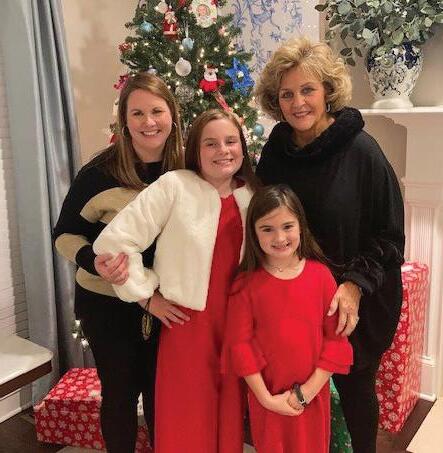

AON attended and sponsored the Community Oncology Alliance (COA) annual conference in Kissimmee, Florida, on March 23 and 24. The two-day conference focused on the future of community oncology and featured dynamic, expert speakers from across the nation including AON’s Chief Executive Officer Todd Schonherz;


Chief Medical Officer Stephen “Fred” Divers, MD; and Chief Pharmacy and Clinical Services Officer James Gilmore. Topics explored during the conference’s educational sessions covered the Enhancing Oncology Model, improving clinical research equity, evaluating 20 years of cancer care advances and much more.
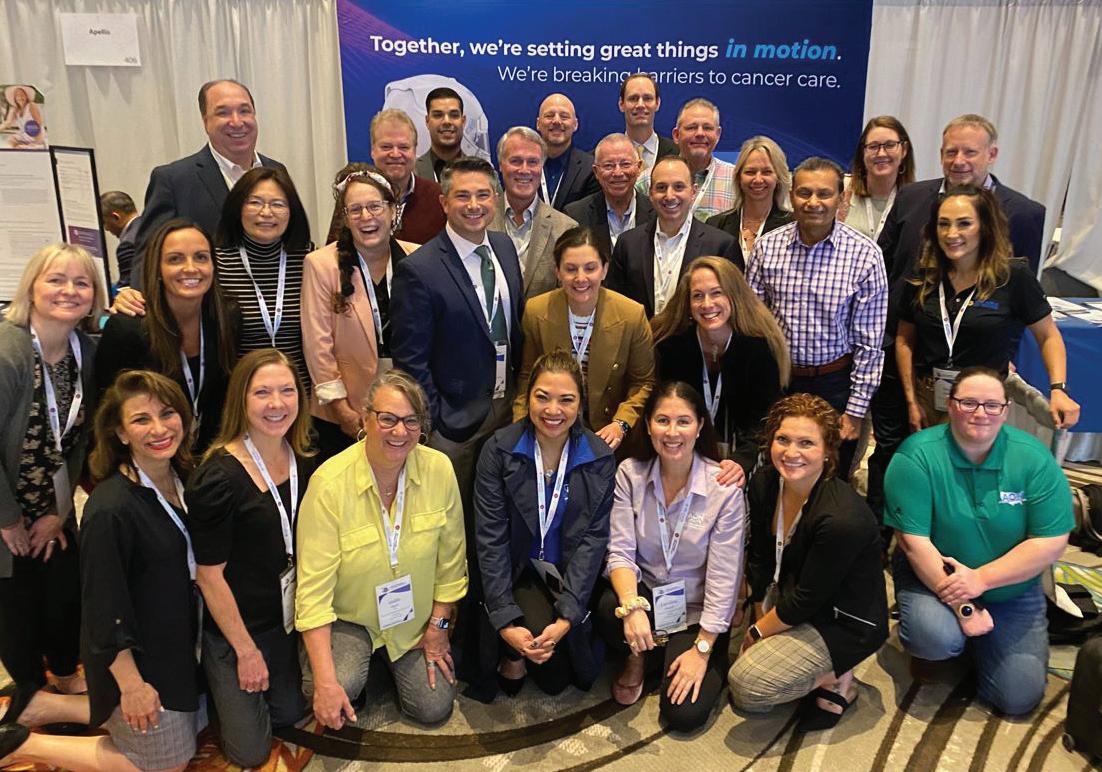
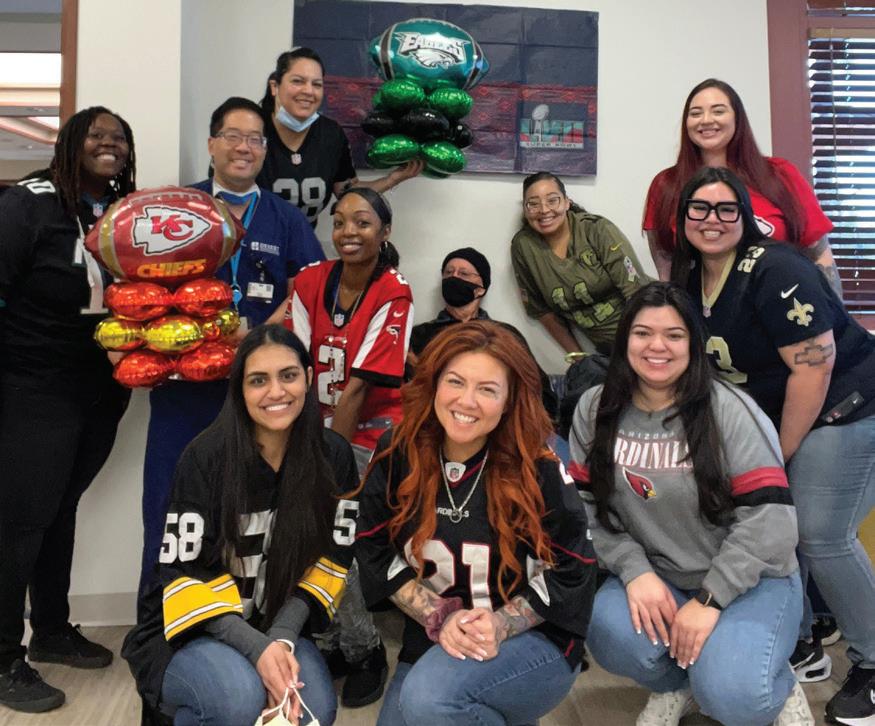

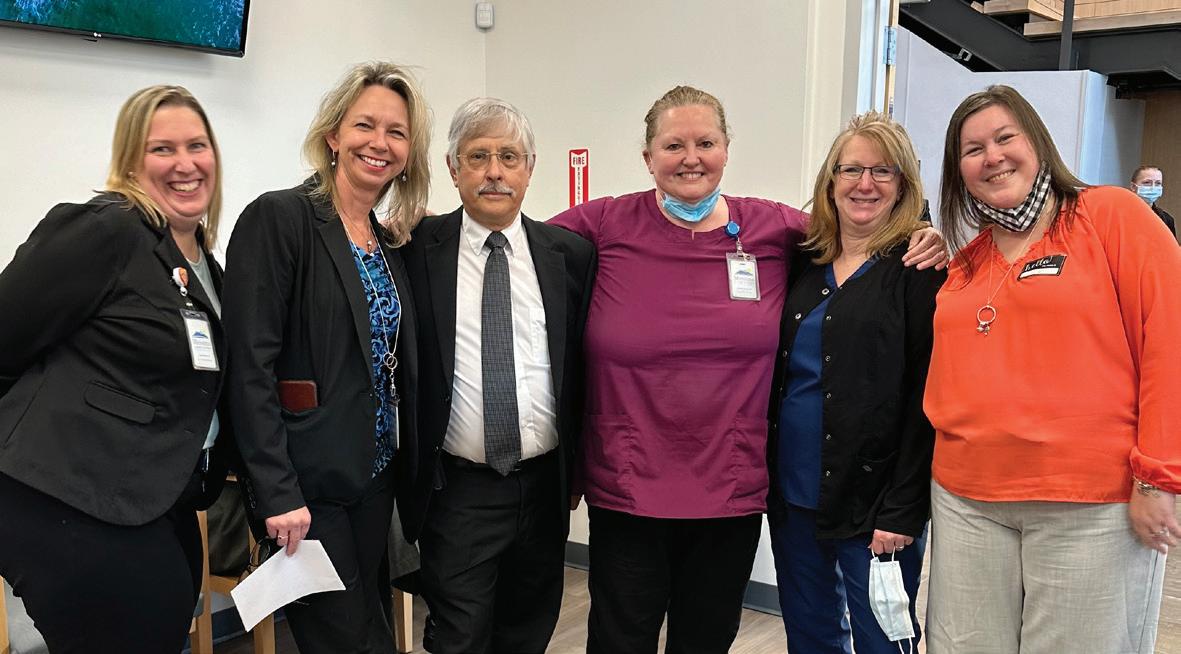
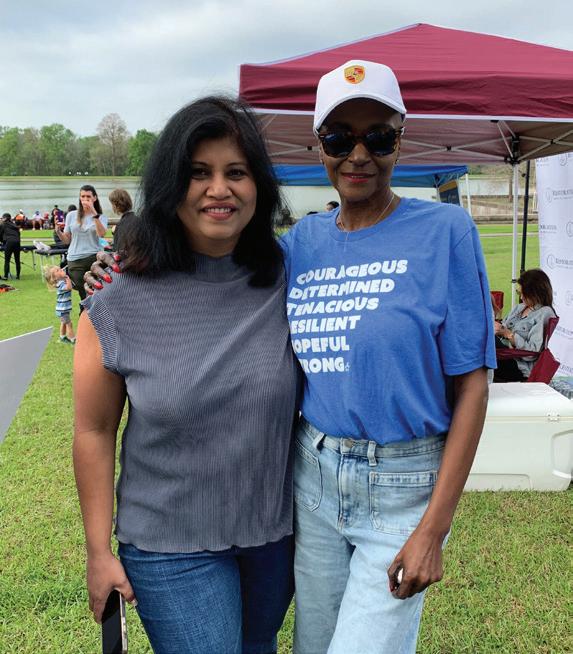



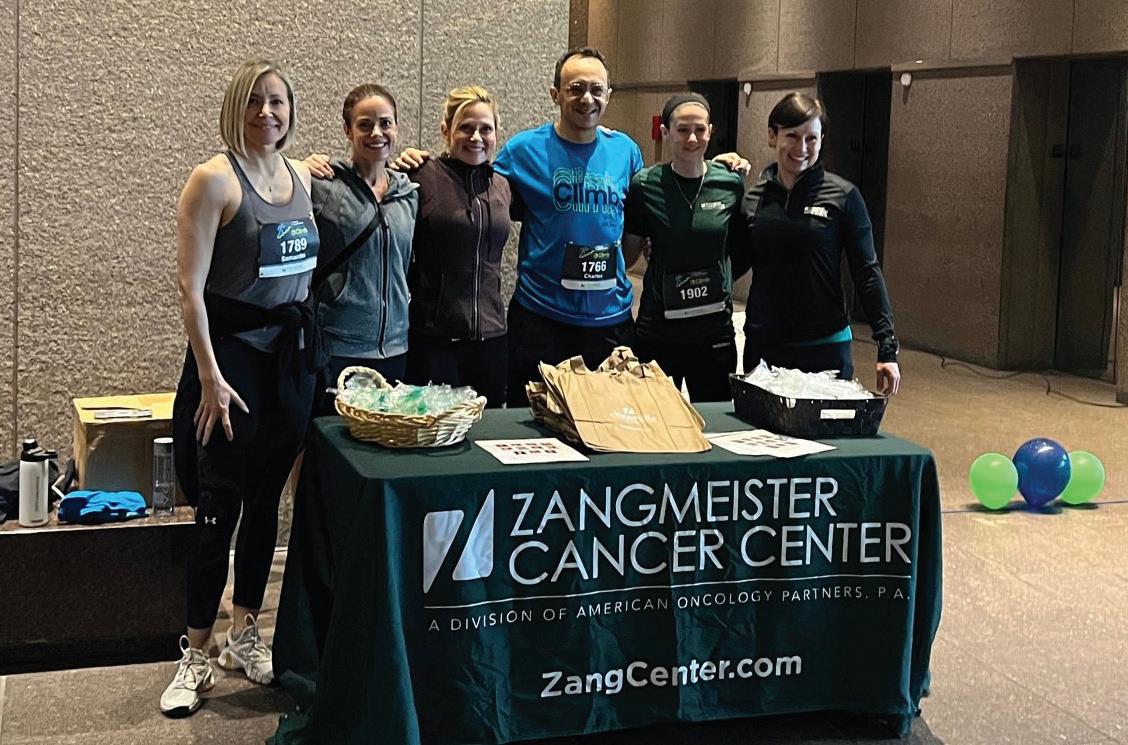
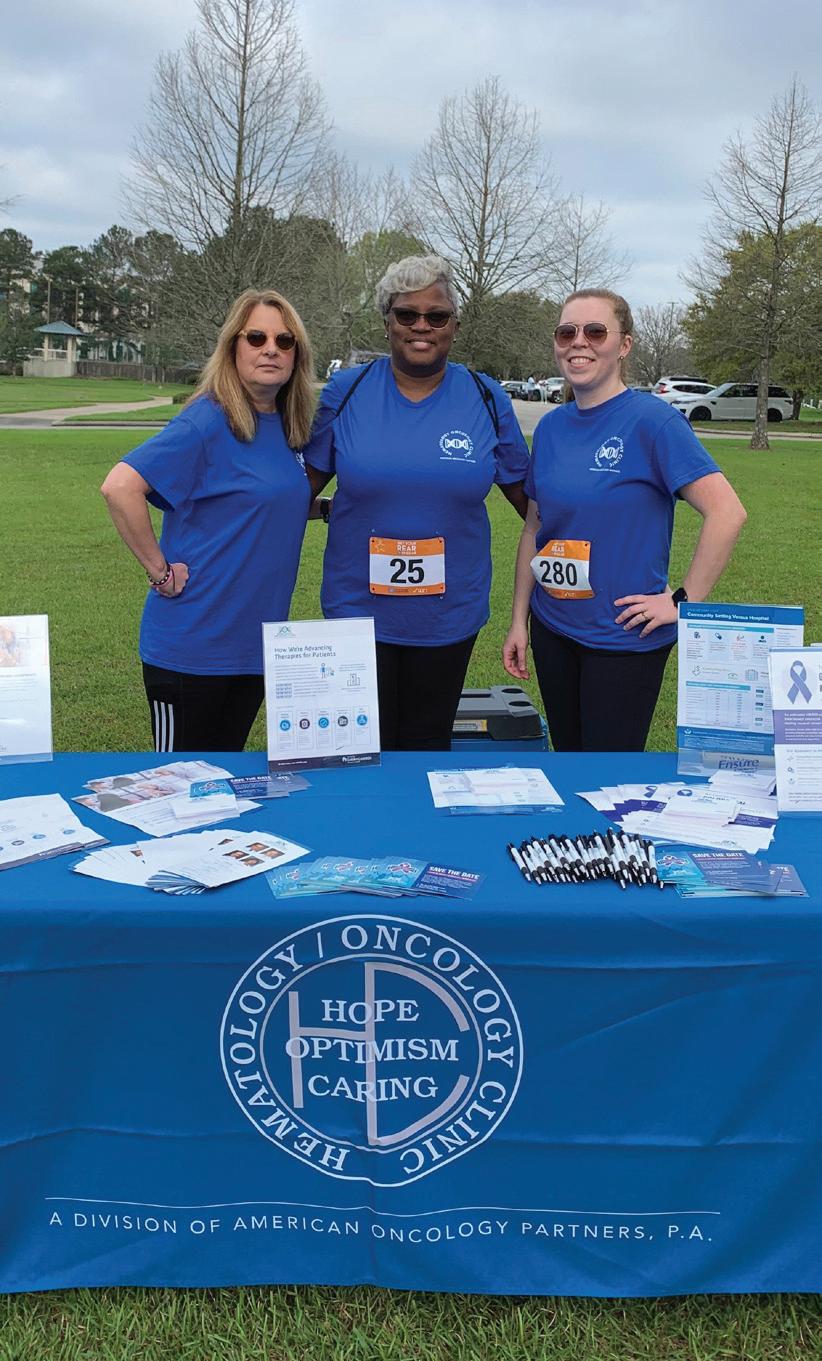
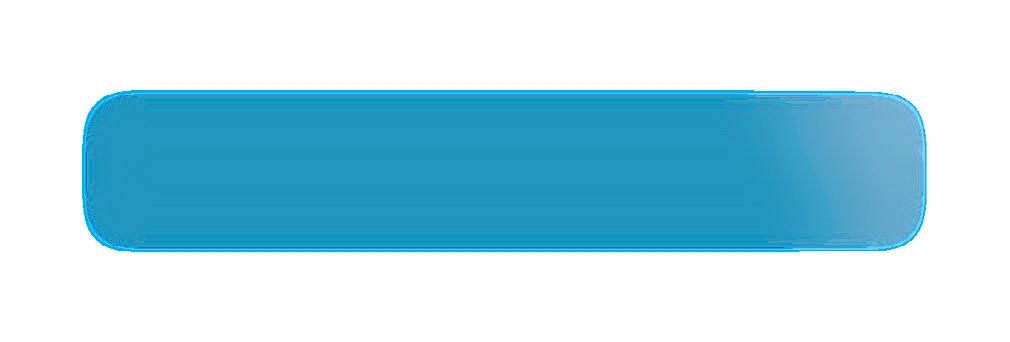
At AON, we’re making great strides toward closing the cancer care gap by ensuring every patient has access to the care needed to help fight their cancer.
With an expanding network of more than 190 providers across 17 states, our practices are not only in big cities, they’re in rural areas where medical resources are scarce. Our clinicians are interconnected across state borders and focused on driving change by remaining at the forefront of new discoveries. Together, we’re doing more.
To drive equity forward, we aim to deliver precision medicine as a standard of care, adopt next-generation sequencing and provide structure to genomic data and more.

At AON, you’re part of a fast-growing network that’s setting great things in motion, exploring new horizons and breaking barriers to cancer care — where the future of cancer care is bright.
